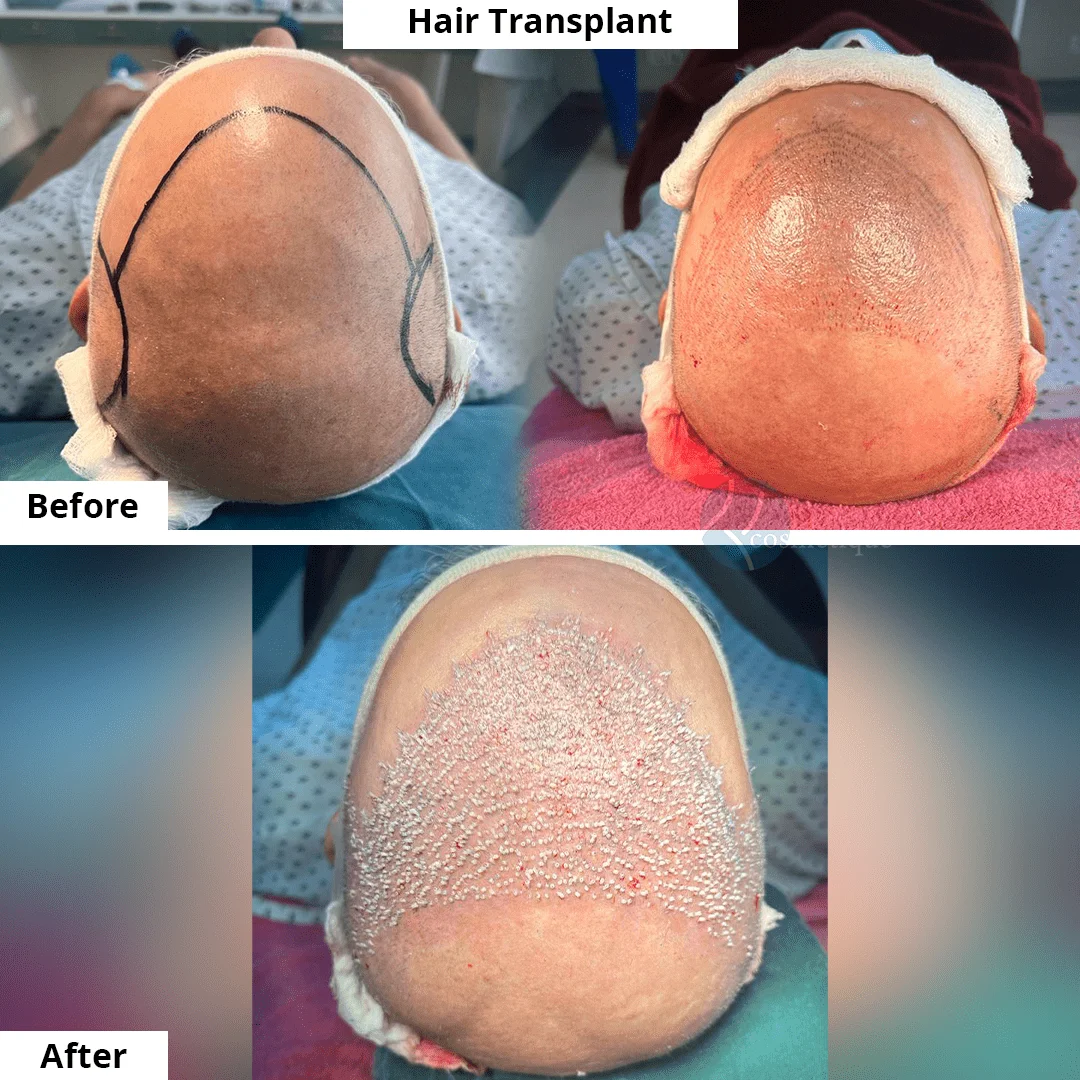Introduction
Hair loss is a common concern for many people in Pakistan. It can affect self-confidence and make people feel older. Luckily, there’s a solution—best hair transplant in pakistan. Hair transplants are a reliable way to restore hair and boost confidence. In this guide, we will explore why hair transplants are a popular choice, the types of procedures available, and what to expect during the process.
Why Choose a Hair Transplant?
Hair transplants are effective for restoring natural-looking hair. They use your own hair follicles, which means the results are real and long-lasting. Here are some reasons why people in Pakistan are choosing hair transplants:
- Permanent Solution: Hair transplants offer a long-term solution to hair loss.
- Natural Results: Since the procedure uses your own hair, the results look natural.
- Improved Confidence: Restored hair can boost self-esteem and improve appearance.
Types of Hair Transplant Techniques
There are two main types of hair transplant methods: Follicular Unit Transplantation (FUT) and Follicular Unit Extraction (FUE). Understanding these techniques can help you decide which one suits your needs.
1. Follicular Unit Transplantation (FUT)
FUT, also known as the strip method, involves removing a strip of skin with hair from the back of the scalp. The hair follicles are then separated and transplanted into the bald areas.
Pros of FUT:
- Ideal for those who need more coverage.
- Faster procedure for large areas.
Cons of FUT:
- Leaves a linear scar on the scalp.
- Longer recovery time.
2. Follicular Unit Extraction (FUE)
In FUE, individual hair follicles are extracted directly from the scalp and transplanted to the desired area. This method does not leave a visible scar.
Pros of FUE:
- Less scarring and shorter recovery time.
- Suitable for smaller areas or detailed hairline work.
Cons of FUE:
- Time-consuming for large areas.
- More expensive than FUT.
The Process of a Hair Transplant
Understanding what to expect during a hair transplant can make the experience smoother. Here’s a step-by-step guide to the hair transplant process:
Step 1: Consultation
The first step is a consultation with a hair transplant specialist. They will examine your scalp, assess the extent of hair loss, and discuss the best approach for you.
Step 2: Preparation
On the day of the procedure, the doctor will prepare your scalp. This may include shaving the donor area and applying local anesthesia.
Step 3: Extraction and Transplantation
Depending on the technique (FUT or FUE), hair follicles are extracted from the donor area. These follicles are then carefully transplanted to the bald areas.
Step 4: Recovery
After the transplant, your scalp may feel tender, and minor swelling is normal. You may be advised to take pain relievers and antibiotics to prevent infection.
Benefits of Hair Transplants in Pakistan
Hair transplants in Pakistan are becoming more popular due to advancements in technology and expertise. Here are some of the main benefits:
- Cost-Effective: Pakistan offers affordable hair transplant services without compromising on quality.
- Experienced Professionals: Many clinics have skilled doctors with years of experience.
- Advanced Techniques: Clinics use modern techniques like FUE, ensuring effective results.
Factors to Consider Before Getting a Hair Transplant
A hair transplant is a big decision, and there are some things to consider before committing to the procedure:
- Age: Younger people may experience more hair loss over time. It’s best to have a consultation to determine if you’re a suitable candidate.
- Hair Loss Stage: Transplants are more effective for people with stable hair loss.
- Cost: The price can vary depending on the technique and extent of hair loss.
- Recovery Time: FUT requires more recovery time than FUE. Choose a method that fits your schedule.
Aftercare Tips for Hair Transplants
Proper aftercare is essential to ensure the success of your hair transplant. Here are some tips:
- Avoid Sun Exposure: Protect your scalp from direct sunlight for a few weeks after the procedure.
- Follow Medication Advice: Take any prescribed medications as directed by your doctor.
- Avoid Strenuous Activities: Give your scalp time to heal by avoiding heavy exercises.
- Be Patient: Hair growth takes time. Full results can take up to 12 months to appear.
Expected Results and Timeline
After a hair transplant, hair growth happens in stages. Here’s what you can expect:
- First Month: Some hair shedding is normal. This is part of the hair growth cycle.
- 3-4 Months: New hair starts to grow, but it may be thin initially.
- 6-9 Months: Noticeable hair growth and improvement in hair thickness.
- 12 Months: Full results are visible, and the hair looks natural and thicker.
Common Questions About Hair Transplants
Here are some frequently asked questions about hair transplants to help you make an informed decision:
Is a Hair Transplant Painful?
Most patients experience minimal discomfort. Local anesthesia is used to numb the scalp, making the procedure almost painless.
How Long Do Hair Transplant Results Last?
Hair transplants provide a permanent solution. The transplanted hair is resistant to balding and will grow like natural hair.
Are There Any Risks?
As with any medical procedure, there are some risks. These can include minor swelling, infection, or scarring. However, these risks are low when the procedure is done by a qualified professional.
Can Women Get Hair Transplants?
Yes, women can also benefit from hair transplants, especially if they have thinning hair or specific bald spots.
Last Words
A hair transplant is a safe and effective solution for those struggling with hair loss. In Pakistan, high-quality hair transplant services are available at affordable prices. By understanding the different techniques, the process, and aftercare, you can make an informed decision about whether a hair transplant is right for you.



